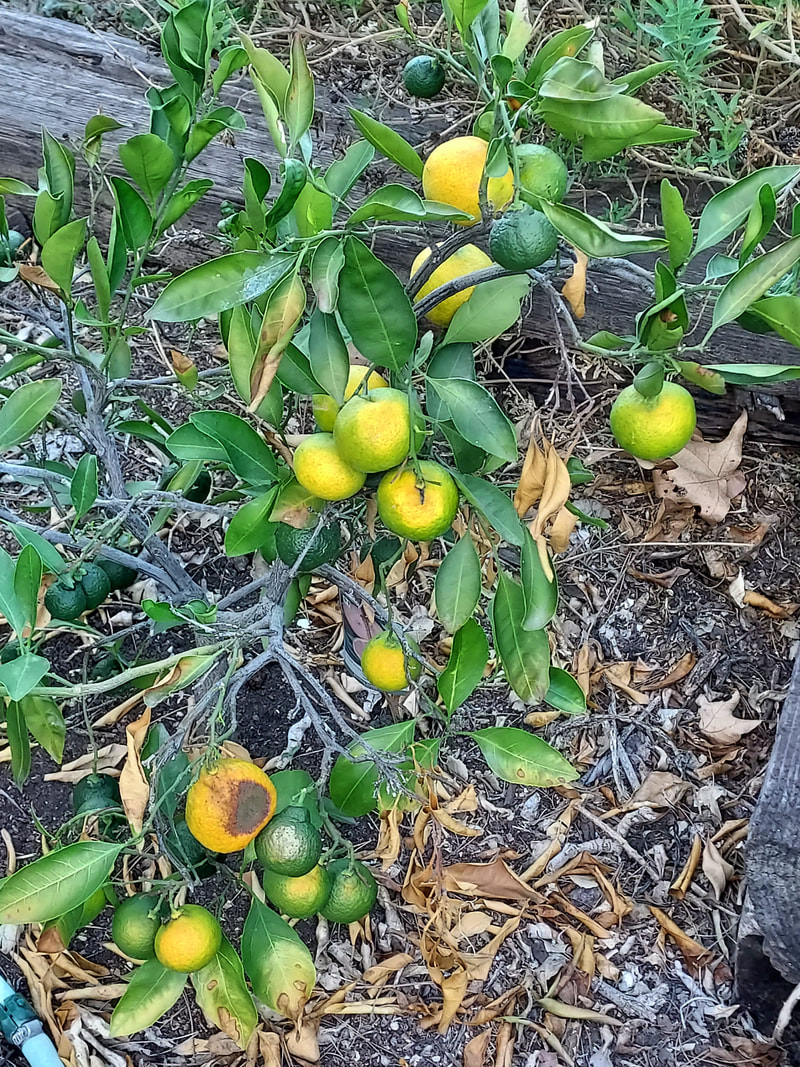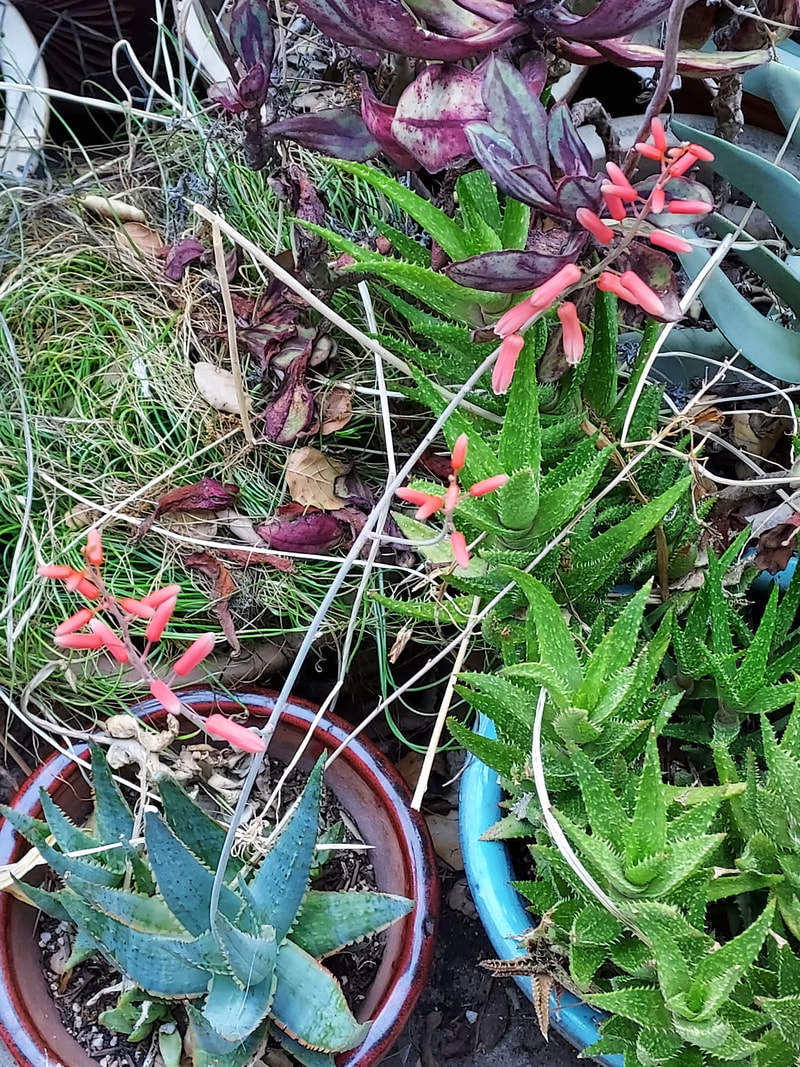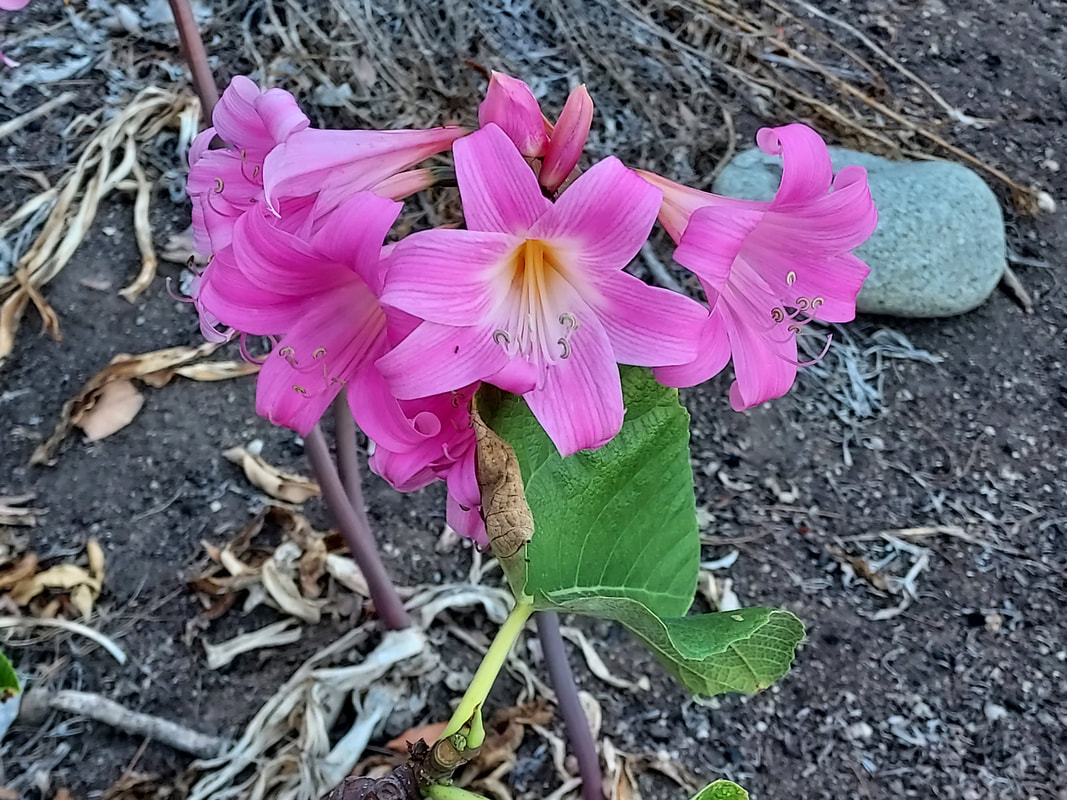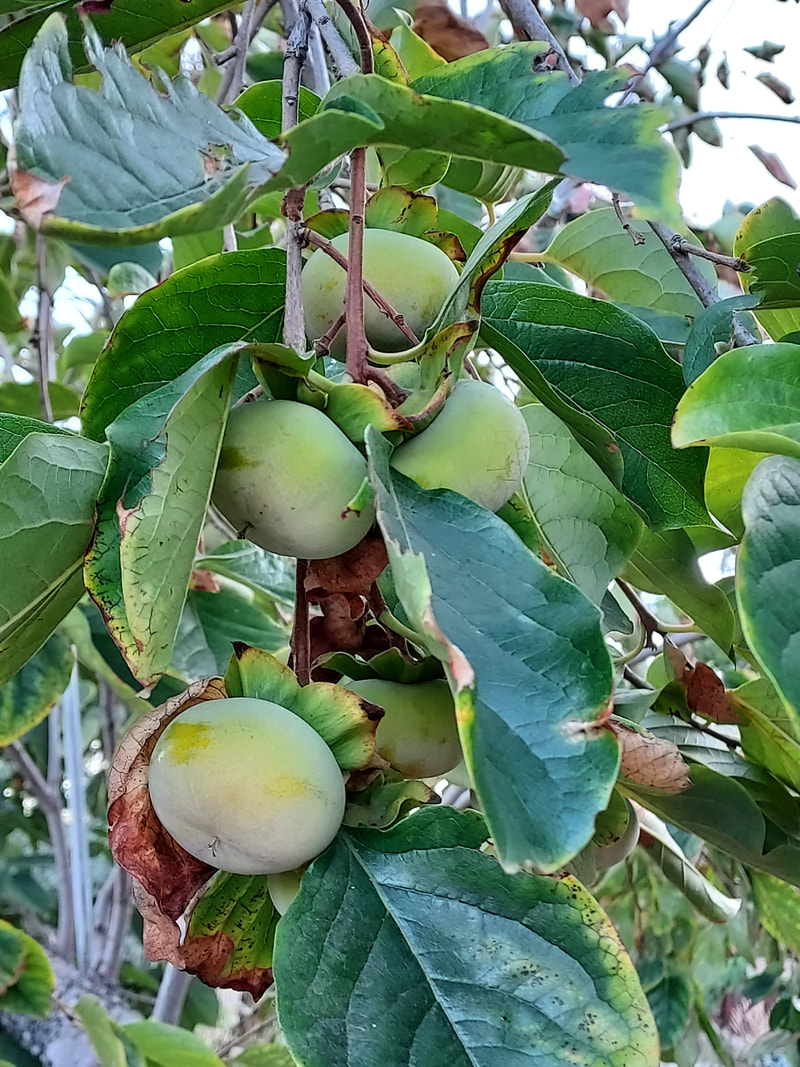| | I’ve just begun to feel back to normal following our week of over-100-degree temperatures, and my garden is showing its relief as well. Foliage is perky enough, a tribute to my earlier “training” plants to grow deeply for their water since they haven’t been watered in 3 weeks. I’m sure they’ll continue to do well until we’re allowed to water again (however minimally) when the Metropolitan Water District repairs are completed. Now, with mild daytime and nighttime temperatures, it's time to get started with Fall gardening opportunities! Propagating Overgrown Succulents I’m doing lots of trimming overgrowth of my succulents that have thrived through the summer, and potting up the cuttings. I’ve watered the cuttings using the water evacuated from my room air conditioner. Boy, what a surprise benefit! I’ve found that when the AC was on for a full day – from about 11am through 8pm – the water pulled from the air filled a 5-gallon bin. It was too heavy to move when it was full, and initially I used a smaller bucket to transfer the water to my container plants ten feet away. Then I figured out to put the empty large bucket onto a roller cart that I could roll to my long row of container plants to water them. Talk about recycling! I’ll almost be sorry when I won’t need to use the air conditioner and not have that “free” water any longer. Sow and Transplant Veggies and Posies With daytime temperatures in the low 80s and nighttime temperatures in the low 60s, seeds will germinate well and transplants will establish themselves nicely. There’s no way of knowing whether these pleasant conditions will continue, or shift back to heat or proceed further toward cold. So, I suggest that you provide for both. That’s my usual September suggestion, when even in a “normal” gardening year, the weather could go either way. Instead of deciding to go one way or the other, I cover all my bets with doing both: sow and transplant the last of the summer crops, and also sow and transplant the first of the fall-through-spring overwintering crops. That way, I’m sure to have something thrive no matter which way the weather goes. It’s a win-win! However, when you choose the summer crops to sow and plant for the last time this year, do choose varieties with the shortest to-maturity time, just to make sure that you’ll get something to mature before the weather truly turns too chilly and the plants stop growing vigorously. When you choose the fall-into-spring crops to sow and plant, choose varieties with short maturity times but also other varieties with long maturity times so you can sow or plant a few of each every month or so for a very long growing and harvesting period. All of it will slow down as the weather gets chillier, so now’s the time to get things started while the weather and the soil is warmer. Besides, it’s always fun to grow more than one variety of each kind of vegetable or flower. You may find that you prefer some of the varieties more than others, either for their growing peculiarities or their flavor or color. Definitely playtime in the garden! Plant Flower Bulbs Now’s the time to check out your local nurseries for their selection of flower bulbs to plant now for spring color. You’ll want to choose the largest bulbs to assure that they’re the healthiest and to plant them immediately so they have as long a growing season as possible prior to they’re finally blooming. This is definitely NOT the time to wait for the bargain bin! For more details on choosing and planting flower bulbs and my favorite online vendors, see my 8/21/21 blog, Fall Bulb Planting for Spring Color. For more garden task possibilities, see September. For more Major-Topic Blog Articles for this time of year, see Homepage. |
|
0 Comments
Leave a Reply. |
Categories |




















 RSS Feed
RSS Feed